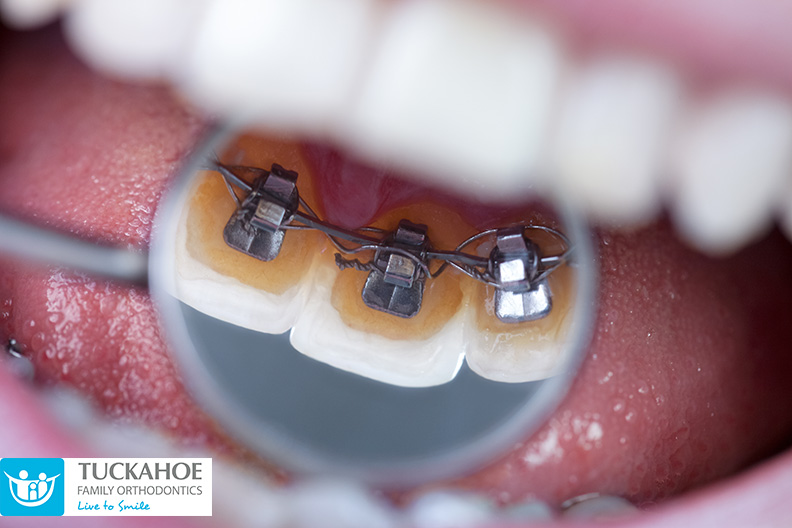3 Simple Techniques For Legacy Orthodontics
The Legacy Orthodontics Statements
Table of ContentsAn Unbiased View of Legacy OrthodonticsSome Known Details About Legacy Orthodontics The Best Strategy To Use For Legacy OrthodonticsA Biased View of Legacy OrthodonticsLegacy Orthodontics Fundamentals Explained
In enhancement, we provide flexible treatment timetables, adaptable repayment options and an enjoyable, enjoyable experience.An orthodontist is a dental practitioner trained to diagnose, protect against, and treat teeth and jaw abnormalities. Orthodontists function with individuals of all ages, from kids to adults.
Malocclusion, or misaligned teeth, can cause dental issues, including dental cavity, gum tissue condition, and hard or agonizing chewing. However not everybody is born with straight teeth. If you have a negative bite or huge areas between your teeth, you may want to get in touch with a dental expert focusing on orthodontic treatment.
The 5-Minute Rule for Legacy Orthodontics
( Photo Credit History: DigitalVision/Getty Images) Orthodontists use repaired and removable oral tools, like braces, retainers, and bands, to change the placement of teeth in your mouth. Orthodontic therapy is for oral problems, consisting of: Misaligned teethBite troubles, like an overbite or an underbiteCrowded teeth or teeth that are too much apartJaw misalignmentThe objective of orthodontic treatment is to enhance your bite.
A healthy and balanced bite guarantees you can eat, chew, and speak effectively. While you may assume of orthodontists as mainly for children or teens who require dental braces, they can fix dental issues at any kind of age. Orthodontists go to university, oral school, and orthodontic college. After college graduation, they invest 2 or 3 years in an orthodontic residency program.
, yet not all dentists are orthodontists. They focus on 2 locations: How to appropriately and securely move teeth Exactly how to correctly lead growth in the teeth, jaw, and faceOnce an orthodontist has finished training, they have the alternative to become board certified.
Legacy Orthodontics Fundamentals Explained
Misalignment, or malocclusion, is the most typical factor people see an orthodontist. It is hereditary and is the outcome of size distinctions in between the upper and reduced jaw or between the jaw and teeth. Malocclusion brings about tooth overcrowding, an irregular jaw, or uneven bite patterns. Malocclusion is usually treated with: Your orthodontist affixes metal, ceramic, or plastic square bonds to your teeth.
Some individuals need a headgear to aid relocate teeth into line with pressure from outside the mouth. A retainer is a custom device that maintains your teeth in location.
They can create added area in the mouth without having to pull teeth. Orthodontists use cords, surgical screws, or plates to sustain your jaw bone.
You might need to see an orthodontist if you have: Crowding or otherwise sufficient room for all of your teethOverbite, when your upper teeth over here come by your base teethUnderbite, when your base teeth are too much forwardSpacing or concerns with gapsCrossbite, which is when your upper teeth fit behind your base teeth when your mouth is closedOpen bite or a vertical gap in between your front base and upper teethMisplaced midline, when the facility of your bottom and top teeth do not line up Fixing a dental malocclusion can: Make attacking, chewing, and speaking easierImprove the proportion of our face and your total appearanceEase pain from temporomandibular joint problemsDifferent your teeth and make them easier to cleanse, assisting avoid tooth decay or tooth cavities It's often a dental professional who first notices misaligned teeth during a regular exam.
Little Known Facts About Legacy Orthodontics.

During your very first orthodontic assessment, you'll likely have: A dental examPhotos taken of your face and smileDental X-raysPanoramic (360 level) X-rays of your face and headImpressions to develop molds of your teethThese tests will certainly help your orthodontist understand exactly how to proceed with your therapy. orthodontics. An orthodontist is a dental practitioner who's had training to treat your teeth and jaw
An orthodontist is focused on your bite, so something like a broken tooth would certainly be dealt with by a dental expert. Orthodontists are concentrated on your bite, or the means your teeth fit together, and the straightness of your teeth.
Ever before questioned how celebs constantly seem to have flawlessly straightened teeth? Orthodontists are dental professionals that focus on fixing abnormalities in the teeth and jaws.
Legacy Orthodontics Can Be Fun For Anyone

While braces are the most typically acknowledged orthodontic treatment, orthodontists have a varied toolkit at their disposal. The specific approach chosen depends on the seriousness of the situation, the individual's age, and private choices. These tried-and-true braces use a system of brackets adhered to the teeth and linked by wires.
Clear aligners, like Invisalign, are a preferred option for individuals seeking an extra very discreet therapy alternative. These removable trays are tailor-made to considerably shift the teeth's placement. Headwear may be utilized in combination with dental braces or aligners to apply added targeted pressures, especially for fixing jaw disparities. In instances of slim jaws, palatal expanders can be utilized to produce space for proper tooth positioning.